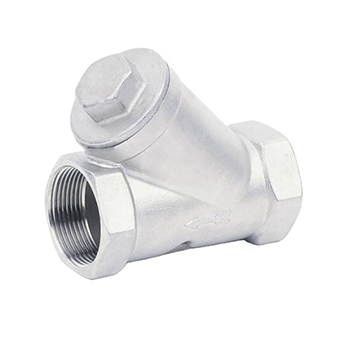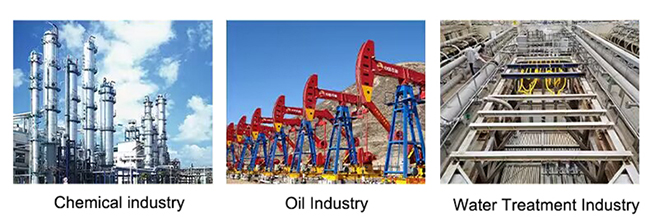What are Advantages of Y-type Strainer?
The Y-type filter is a device for the pipeline system that conveys the medium. It is usually installed in the hydraulic control valve/pressure relief valve/pressure relief valve/fixed water level or other equipment to protect the normal use of the valve equipment from particulate impurities in the medium. The Y-type filter has a wide range of applications and is often used in food, chemical, environmental protection, and other industries. Next, I want to introduce to you the advantages of using the Y-type filter and the cleaning method.
Y-type trainer basics
The y-type filter is an important industrial filter, especially suitable for media with high temperature, high pressure, high viscosity, and easy crystallization. It can effectively filter out suspended particles and impurities in the medium to ensure the normal operation of the system and prolong the life of the equipment. The Y-type strainer can be used in conjunction with main equipment such as valves in the pipeline, or it can be used alone in the pipeline.
The structure of the Y-type filter
The y-type filter is generally composed of an inlet, outlet, filter screen, filter screen bracket, and other parts. The filter screen is the core part of the whole filter, and it can choose different materials and pore sizes according to specific usage requirements. The filter screen bracket is used to fix the filter screen to ensure that its position does not move.
Advantages
High filtration efficiency: It can filter liquids and solids, and filter particles of about 0.45 μm, with a filtration rate as high as 99.9% and a low filtration differential pressure.
Accurate filtering effect: The special structure of the filter, coupled with the advanced filtering technology, the Y-shaped filter can allow only the material with the diameter of the particle to enter the system, which has an ideal filtering effect. Now there are various filter specifications, customers can choose according to their actual situation, and the flow rate of the system can also be flexibly adjusted according to needs.
Superior chemical corrosion resistance: resistant to various acids, alkalis, salts, and most organic solvents. Odorless and solvent-free, the Y-type filter is very suitable for industrial applications such as medicine, food, chemical industry, and environmental protection. The 1-inch Y-type filter adopts scientific formula, sintered at high temperature, the filter pore size is the same inside and outside, and it is easy to clean the residue.
Fully automatic operation, continuous water discharge: among the units in the filter combination, the backwashing process is carried out alternately in turn, and the working and backwashing states are automatically switched, and water can be continuously discharged; the water consumption of backwashing only accounts for 0.5% of the water output; If combined with air-assisted backwashing, the self-consumption water can be reduced to below 0.2%. High-speed backwashing can be completed in only tens of seconds.
Long service life: The new plastic filter element is wear-free and corrosion-free. It has been used for 6-10 years without wear and tear, and will not age, and the filtering and backwashing effects will not deteriorate due to prolonged use.
How does the Y-filter work?
The Y-type filter is Y-shaped, one end is to let fluids such as water pass through, and the other end is to precipitate waste and impurities. Its function is to remove impurities in the water to protect the normal operation of valves and equipment. The water to be treated by the filter enters the body through the water inlet, and the impurities in the water are deposited on the stainless steel filter net, thereby generating a pressure difference.
The pressure difference between the water inlet and outlet is monitored through the differential pressure switch. When the pressure difference reaches the set value, the electric controller sends signals to the hydraulic control valve and the drive motor to trigger the following actions: the motor drives the brush to rotate to clean the filter element, and at the same time controls the valve. Open for sewage, the whole cleaning process only lasts for tens of seconds.
When the cleaning is over, close the control valve, and stop the motor, the system returns to its initial state and enters the next filtration process. After the equipment is installed, the technical personnel will debug it and set the filtration time and cleaning conversion time, the water to be treated will enter the body from the water inlet, and the filter will start to work normally.
Application
- The y-type filter is an indispensable filter device for the pipeline system of conveying medium. The y-type filter is usually installed at the inlet port of pressure reducing valve, pressure relief valve, fixed water level valve, or other equipment to remove impurities in the medium to protect the normal use of valves and equipment.
- Corrosive materials in chemical production. Such as alkali, sulfuric acid, nitric acid, acetic acid, etc.
- Low-temperature materials in refrigeration production. Such as liquid methane, liquid nitrogen, liquid oxygen, and various refrigerants.
- Light industrial food and materials with hygienic requirements in production.
- Weakly corrosive materials in the chemical industry, petroleum production, and urban heating. Such as water, ammonia, oil, hydrocarbons, etc.
- The Y-type filter can remove impurities such as sediment, clay, rust, suspended solids, algae, macromolecular substances, and other tiny particles in the water, and has a strong water purification effect. As a product of the thick pipe filter series, the Y-type filter is playing an increasingly important role in clean water and microfiltration areas that require good water quality and has become an indispensable part of sanitation operations.


